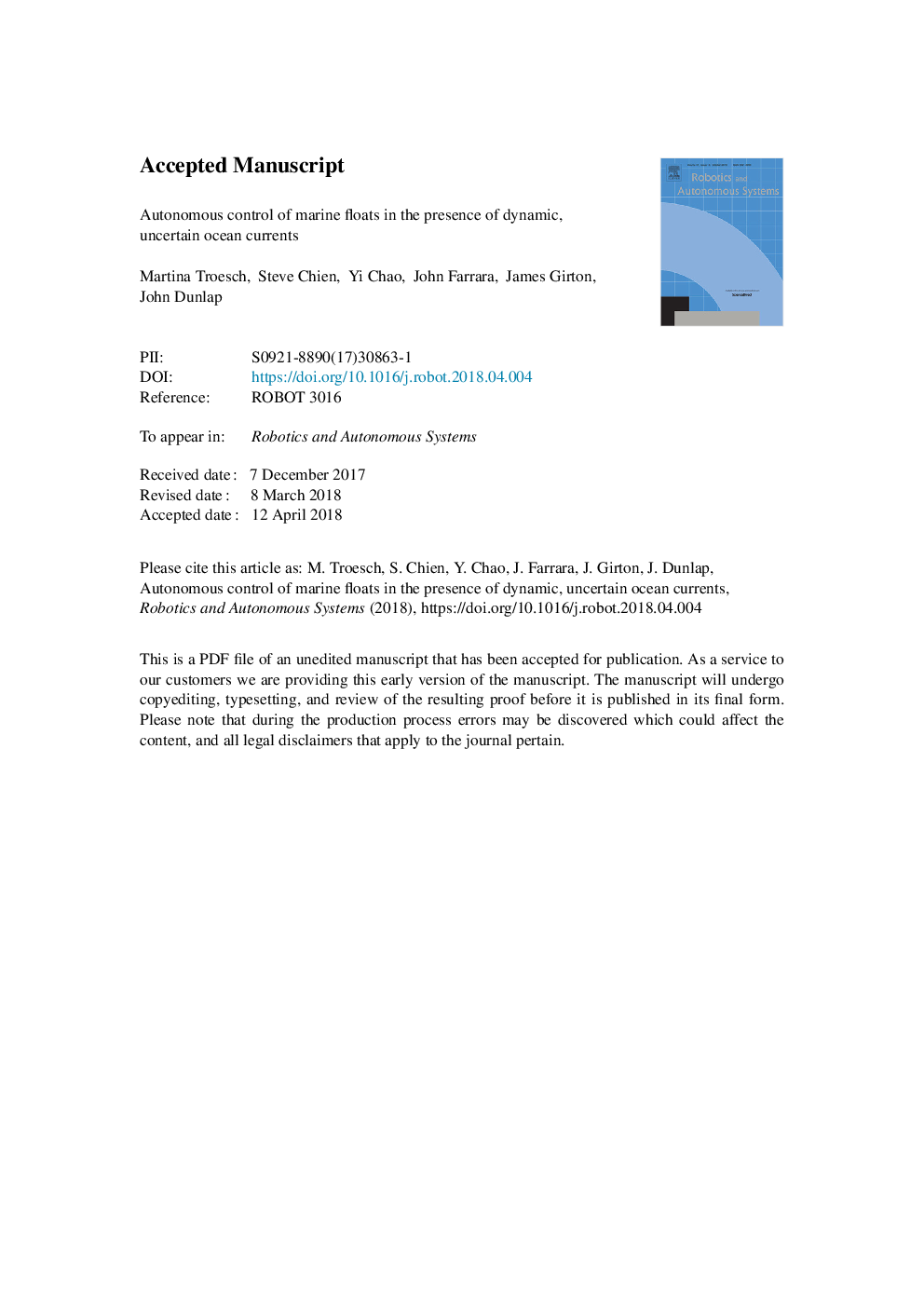| Article ID | Journal | Published Year | Pages | File Type |
|---|---|---|---|---|
| 6867027 | Robotics and Autonomous Systems | 2018 | 44 Pages |
Abstract
A methodology is described for control of vertically profiling floats that uses an imperfect predictive model of ocean currents. In this approach, the floats have control only over their depth. This control authority is combined with an imperfect model of ocean currents to attempt to force the floats to maintain position. First, the impact of model accuracy on the ability to station keep (e.g. maintain X-Y position) using simulated planning and nature (ground-truth in simulation) models is studied. In this study, the impact of batch versus continuous planning is examined. In batch planning the float depth plan is derived for an extended period of time and then executed open loop. In continuous planning the depth plan is updated with the actual position and the remainder of the plan re-planned based on the new information. In these simulation results are shown that (a) active control can significantly improve station keeping with even an imperfect predictive model and (b) continuous planning can mitigate the impact of model inaccuracy. Second, the effect of using heuristic path completion estimators in search are studied. In general, using a more conservative estimator increases search quality but commensurately increases the amount of search and therefore computation time. Third are presented results from an April 2015 deployment in the Pacific Ocean that show that even with an imperfect model of ocean currents, model-based control can enhance float control performance.
Keywords
Related Topics
Physical Sciences and Engineering
Computer Science
Artificial Intelligence
Authors
Martina Troesch, Steve Chien, Yi Chao, John Farrara, James Girton, John Dunlap,
